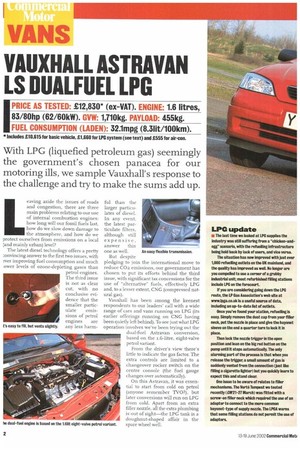LPG update
Page 42

If you've noticed an error in this article please click here to report it so we can fix it.
The last time we looked at LPG supplies the industry was still suffering from a "chicken-andegg" scenario, with the refuelling infrastructure being held back by lack of users, and vice versa.
The situation has now improved with just over 1,000 refuelling outlets on the UK mainland, and the quality has improved as well. No longer are you compelled to use a corner of a grubby industrial unit; most refurbished filling stations include LPG on the forecourt.
If you are considering going down the LPG route, the LP Gas Association's web site at vrivw.lpga.co.uk is a useful source of data, including an up-to-date list of outlets.
Once you've found your station, refuelling is easy. Simply remove the dust cap from your filler neck, put the nozzle in place and give the bayonet sleeve on the end a quarter turn to lock it In place.
Then lack the nozzle trigger in the open position and lean on the big red button on the pump until it stops automatically. The only alarming part of the process is that when you release the trigger, a small amount of gas is suddenly vented from the connection (just like filling a cigarette lighter) but you quickly learn to expect this and stand clear.
One issue to be aware of relates to filler mechanisms. The Verte Tempest we tested recently (CM21-27 March) was fitted with a screw-on filler neck which required the use of an adaptor to connect to the more common bayonet-type of supply nozzle. The LPOA warns that some filling stations do not permit the use of adaptors.




















































































































































